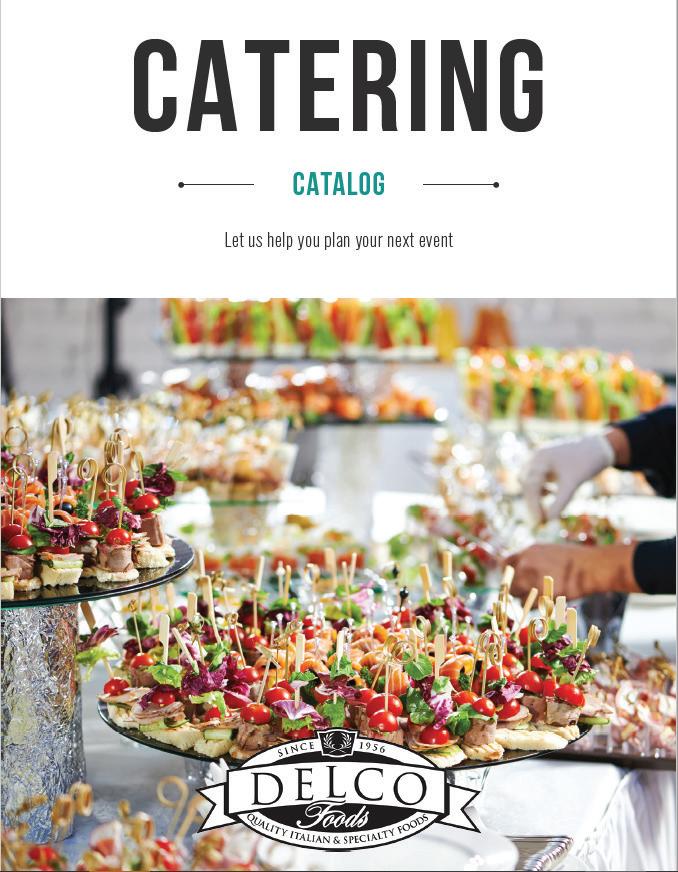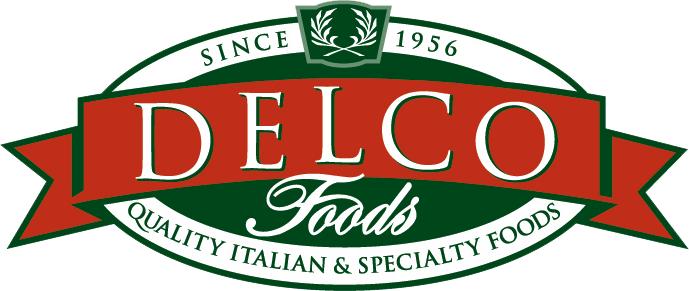
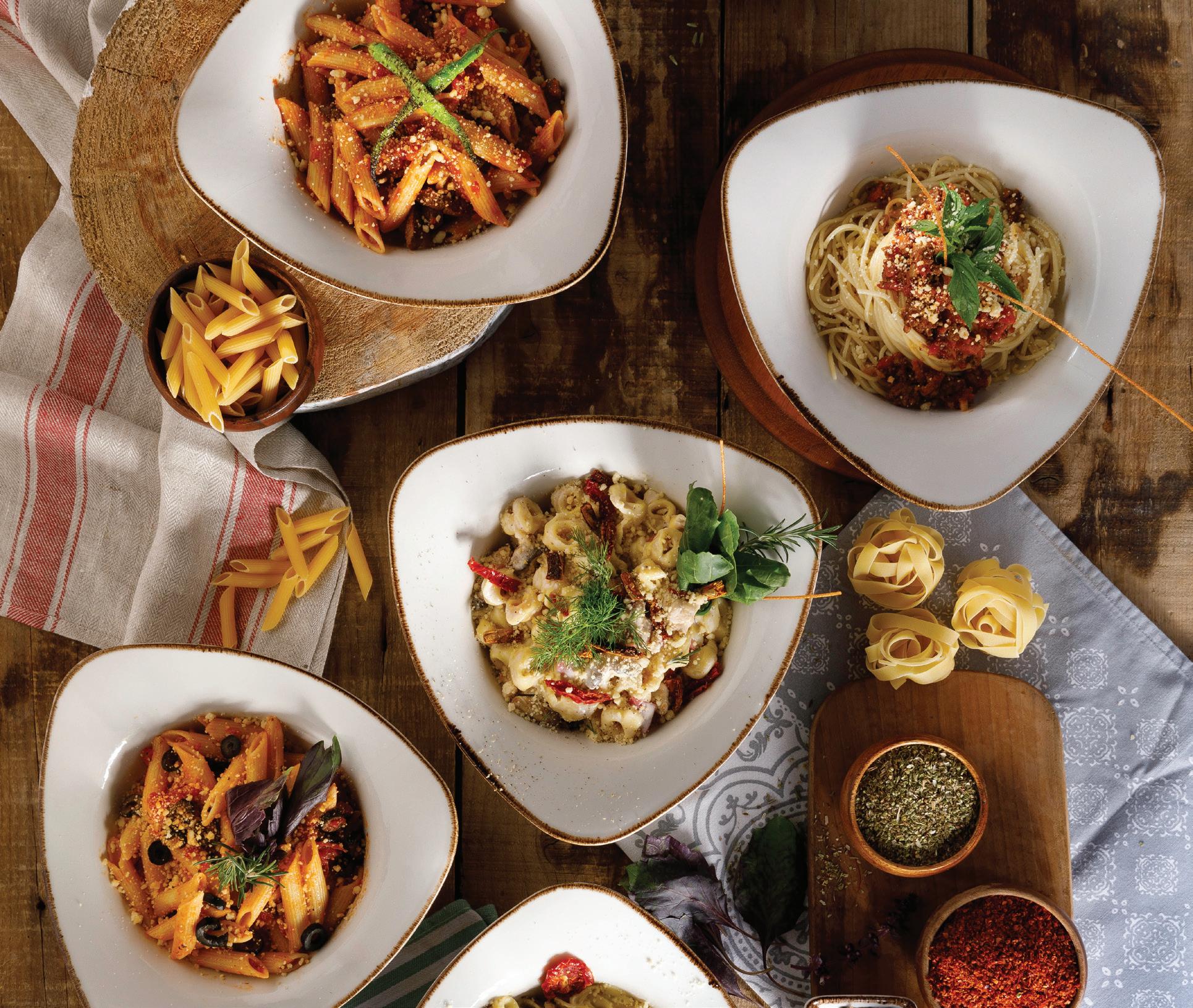
“It’s not what we have, but what we enjoy, that constitutes our abundance.”

Epicurus

4-7
FEATURED BRAND / FOLLOW US INDUSTRY INSIGHTS
FEATURED BRANDS / ICE MELT CATERING CATALOG
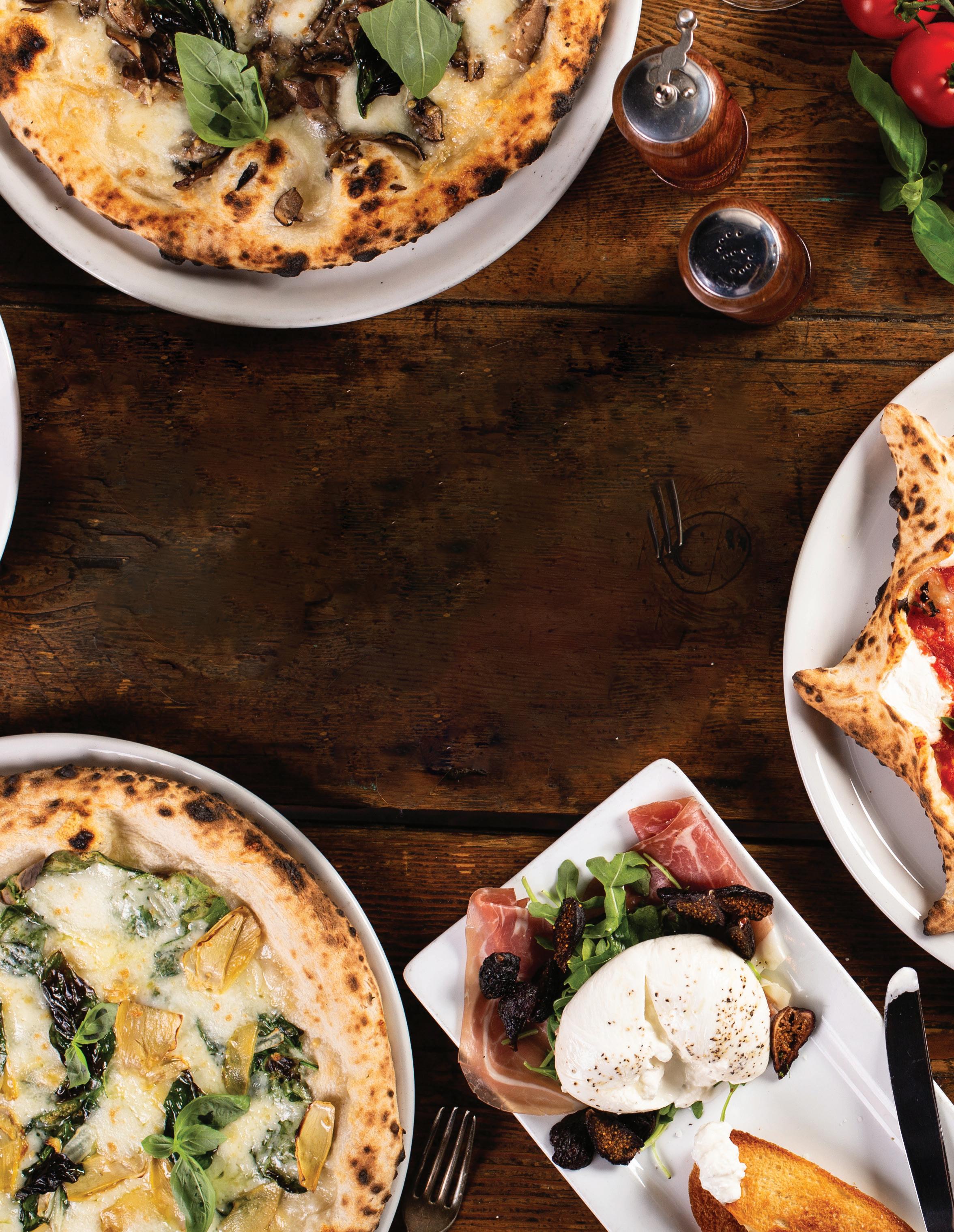



“It’s not what we have, but what we enjoy, that constitutes our abundance.”

Epicurus

4-7
FEATURED BRAND / FOLLOW US INDUSTRY INSIGHTS
FEATURED BRANDS / ICE MELT CATERING CATALOG


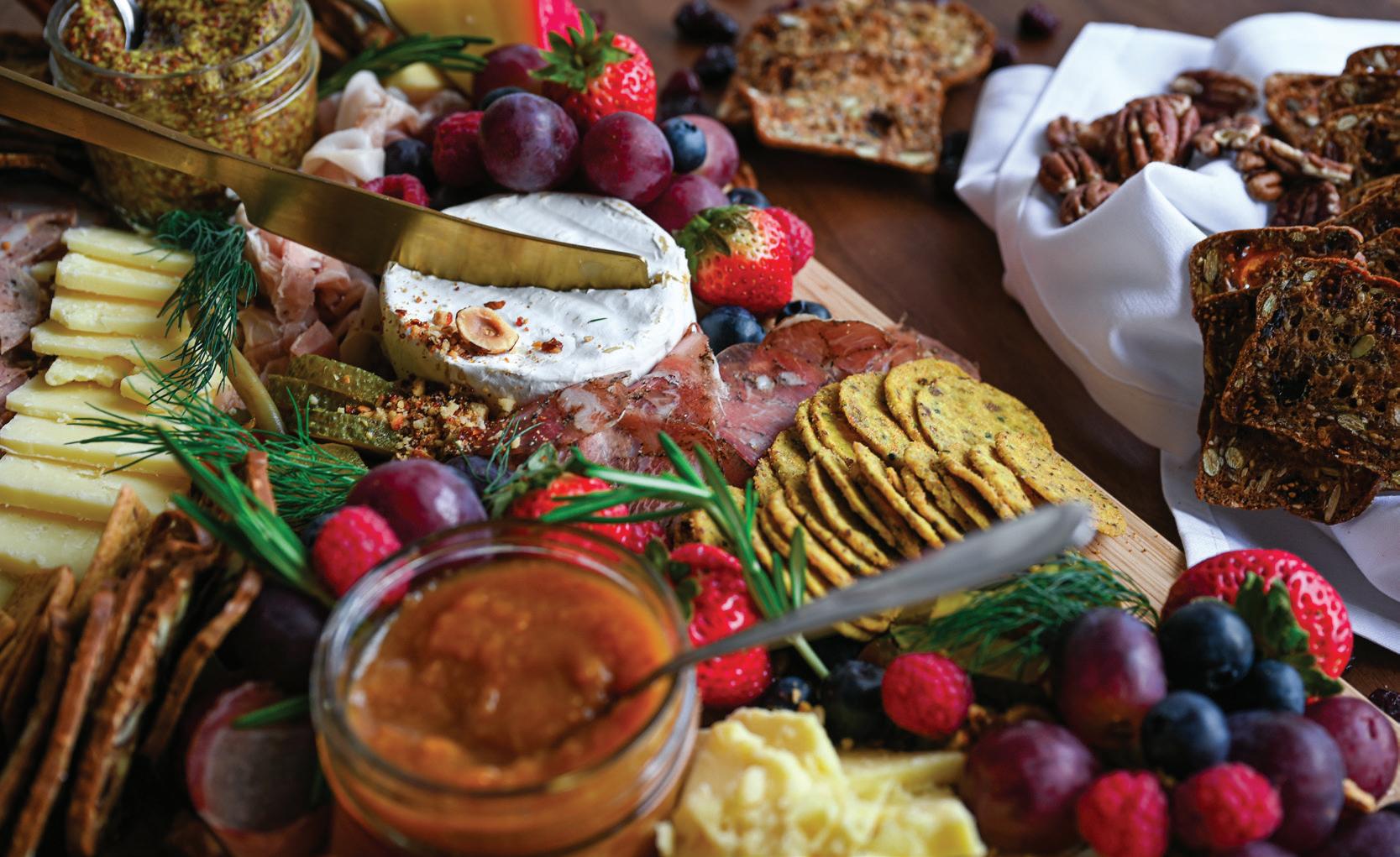
Theholidays are the perfect time for pizzerias and Italian restaurants to expand beyond their regular dine-in and takeout menus. Catering requests spike as customers look for festive, family-style meals that bring comfort and creativity to their celebrations. This year, holiday catering is all about flavor-forward menus, elevated presentation, and meaningful experiences that reflect your brand. Here’s what’s trending, and how you can make the most of it.
Group dining is all about connection, and nothing says togetherness like a big Italian spread. Large-format pasta trays, antipasto boards, and rustic desserts like tiramisu or ricotta cheesecake are ideal for catering.
Trend tip: Offer customizable “holiday feast” packages with a mix of classic and modern dishes, think trays of baked ziti or chicken francese paired with seasonal sides like roasted vegetables or butternut squash ravioli. Packages make it easy for customers to order, while add-ons (like garlic knots, salads, or mini cannoli) boost ticket size.
This season, guests are looking for familiar comfort with a touch of luxury. Catered meals are being upgraded with artisan ingredients and restaurant-quality presentation, even when served at home. For Italian operators, that means:
• Using house-made sauces, imported cheeses, and specialty cured meats
• Offering charcuterie or burrata boards as a crowd-pleasing starter
• Garnishing trays with fresh herbs or signature oils for color and aroma
Pro tip: Consider offering two tiers of catering—Classic Comfort and Signature Experience—to appeal to different budgets.
Pizza Goes Party-Worthy Pizza is the ultimate shareable food—and this year, it’s being reimagined for events.
• Gourmet toppings like prosciutto, fig jam, truffle oil, or spicy honey give pies an upscale twist.
• Mini pizzas or pizzettes make a great passed appetizer or kids’ party hit.
• Build-your-own pizza kits for office parties or family gatherings add an interactive, memorable touch.
Pair pizzas with festive sides like arancini, fried calamari, or seasonal salads for a complete spread.
Even traditional Italian menus can tap into the plant-forward movement. Guests are looking for lighter, vegetable-driven options alongside the classics.
• Offer vegetarian lasagna, roasted vegetable penne, or stuffed peppers with farro or lentils.
• Add a “Winter Harvest” salad featuring roasted root vegetables, cranberries, and shaved parmesan.
• Consider dairy-free dessert options—like olive oil cake or fruit crostatas—for modern appeal.
This helps your catering menu appeal to a wider audience and meet dietary needs without straying too far from Italian tradition.
Nostalgia with a Twist
Comfort food is still king during the holidays—but with a twist. Customers love seeing their favorites refreshed.
Think:
• Deconstructed lasagna cups or baked pasta bites for cocktailstyle parties
• Stuffed focaccia or pizza rustica filled with festive flavors like spinach and sausage
• Mini tiramisu cups or cannoli platters for easy serving
A little creativity in format goes a long way in making your catering menu feel special and eventready.

Sustainability is no longer just a buzzword—it’s a customer expectation. Italian operators can take simple steps to show they care:
• Use eco-friendly trays and packaging that travel well but reduce plastic.
• Provide compostable cutlery or serving utensils.
• Source local produce and cheeses where possible, and highlight that on your catering flyer.
Small gestures like these make your brand stand out to environmentally conscious clients.
With so many last-minute planners, simplicity wins.
• Create an easy online order form or QR code linking to your catering menu.
Launch your catering menu by early November and promote across social, email, and in-store with appetizing photos and clear order deadlines.
Offer themed packages (like Italian Holiday Feast for 10) with entrees, sides, and dessert to simplify ordering and raise ticket averages.
Encourage advance orders with a small discount or free dessert tray—great for planning and steady kitchen flow.
Share group packages with local offices—Italian favorites are always a hit for holiday lunches and parties.
• Add holiday cut-off dates for large orders so customers don’t miss out.
• Train staff to upsell sides, desserts, and beverages when customers inquire about catering.
A smooth process makes clients more likely to reorder next year— and tell their friends.
Office celebrations and team lunches are back in a big way. Italian food is always a top pick for corporate groups, it’s shareable, filling, and crowd-friendly.
To stand out:
• Offer boxed individual meals for convenience and hygiene.
• Create team platters designed for easy serving.
• Add company-logo cookies or branded packaging for a polished finish.
Promote these options early, many corporate clients plan their holiday parties 4–6 weeks ahead.
At the heart of every great Italian catering experience is hospitality. Whether you’re feeding a family of 10 or an office of 100, aim to make your dishes feel warm, festive, and personal. This season’s trends are all about balancing tradition with creativity—offering customers the comfort they crave while giving them something to talk about.
As you plan your holiday catering lineup, remember: your food isn’t just part of the celebration—it is the celebration.
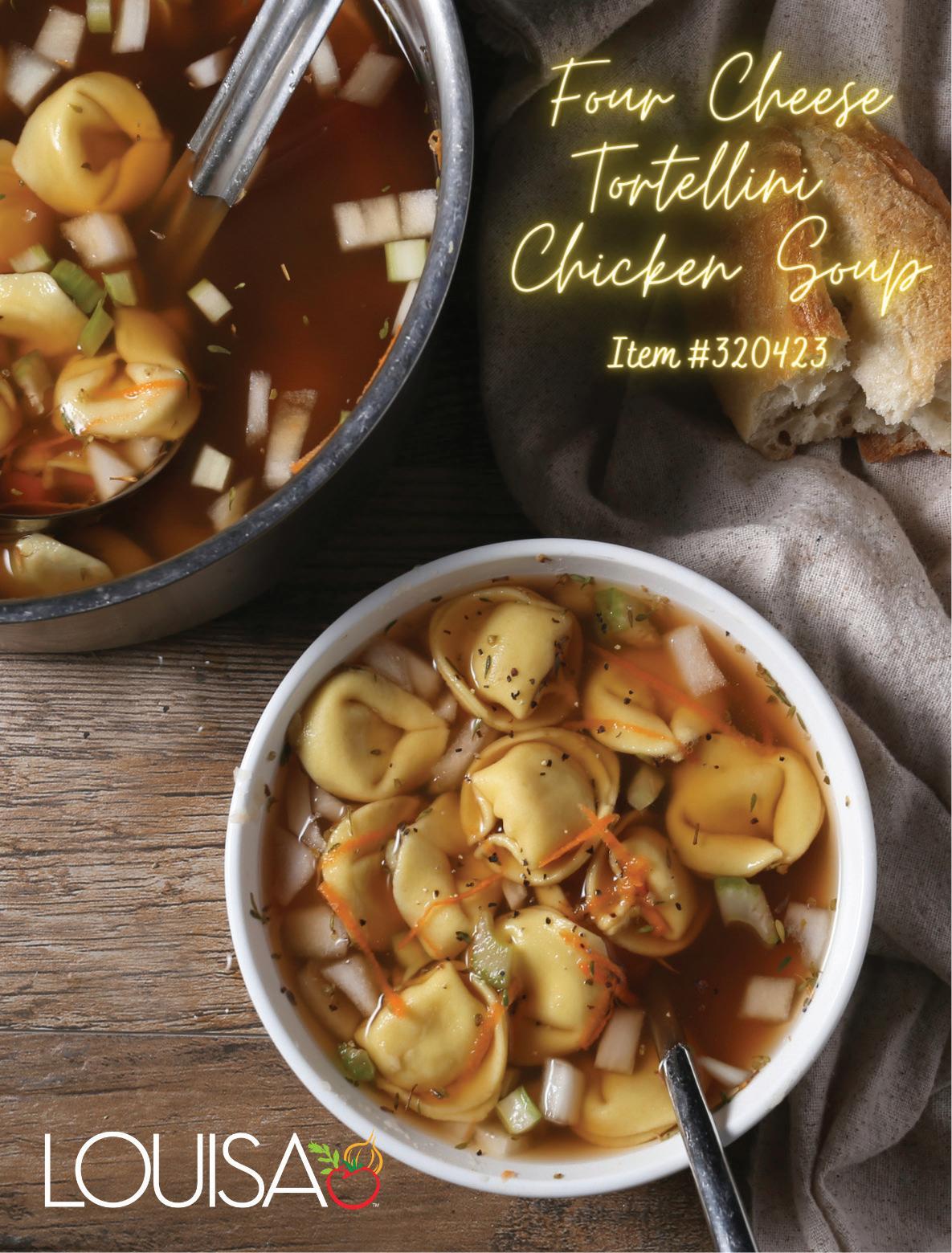
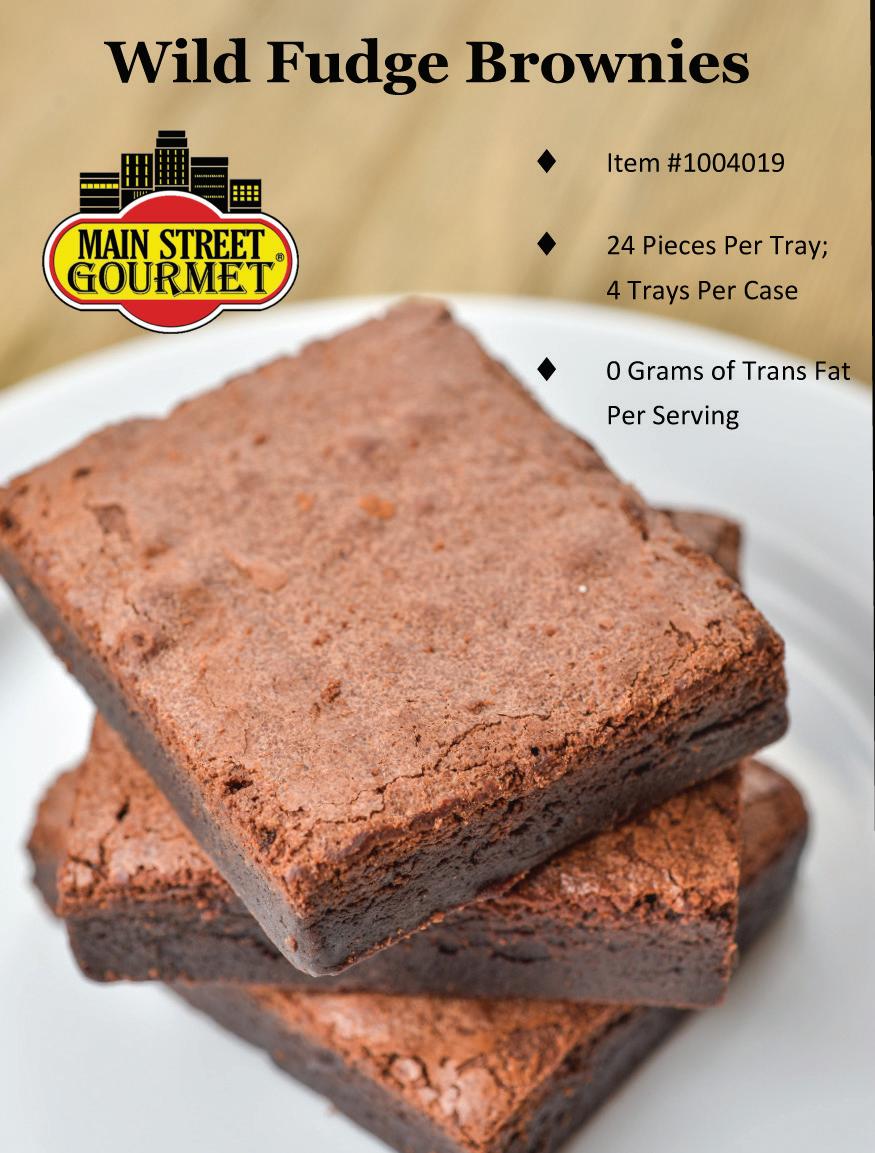
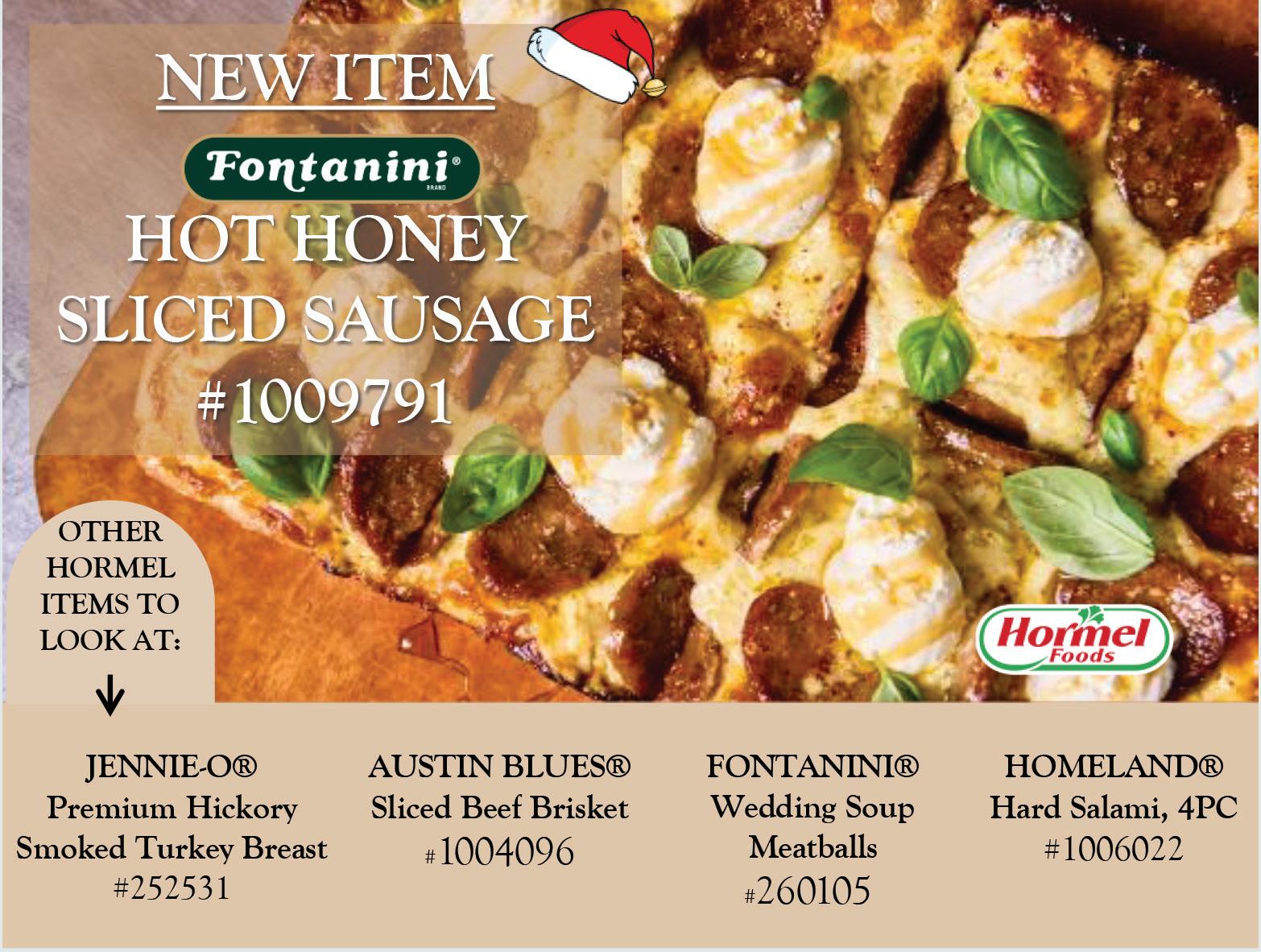



When it comes to pizza, America has long been divided between the major national chains and the thousands of independent operators that define the local dining scene. While chains dominate in scale, it’s the nonchain pizzerias, the mom-andpop shops, regional favorites, and family-owned institutions, that capture the authentic spirit of American pizza culture. Today, these operators are facing both unprecedented challenges and exciting opportunities, shaped by shifting consumer behaviors, technology, and evolving food trends.
According to data from PMQ Pizza Magazine’s 2024 Pizza Power Report, the U.S. pizza industry generates over $46 billion annually, with independents accounting for roughly 41% of total sales. Although chains capture a large share, the more than 36,000 independent pizzerias across the country remain a vital part of the industry. These local shops often thrive by offering authenticity, regional styles, and strong community connections that national chains struggle to replicate.
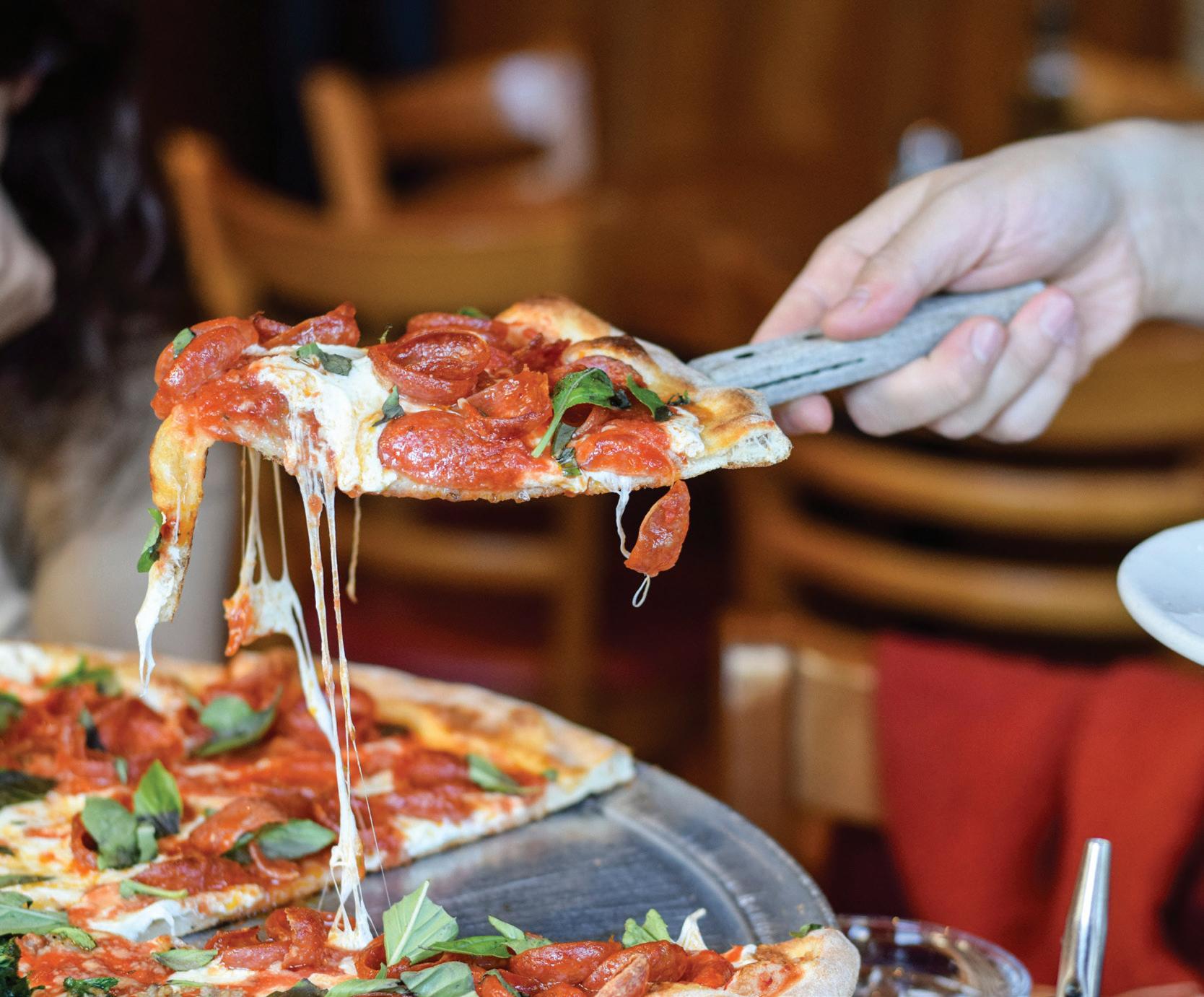
A Technomic consumer survey found that 64% of pizza lovers prefer independent pizzerias for taste, freshness, and menu creativity.
Other insights driving growth for independents include:
• Customization & uniqueness : Nearly 70% of Gen Z and Millennials say they’re more likely to choose a pizzeria that offers build-your-own or specialty pies.
• Premium ingredients : Over 58% of consumers are willing to pay more for organic produce, locally sourced toppings, and specialty cheeses.
• Community connection : A Datassential report noted that diners view independents as more authentic and communitydriven, which increases customer loyalty.
Despite their advantages, independents face mounting pressures:
• Restaurant labor costs have risen by over 20% since 2020, putting pressure on small operators with thinner margins.
• Turnover remains high, with nearly 75% of restaurants reporting difficulty retaining hourly staff.
• The price of mozzarella has fluctuated significantly, with 2024 averages up 12% yearover-year.
• Wheat prices and supply chain disruptions continue to impact flour costs, affecting every operator who relies on dough.
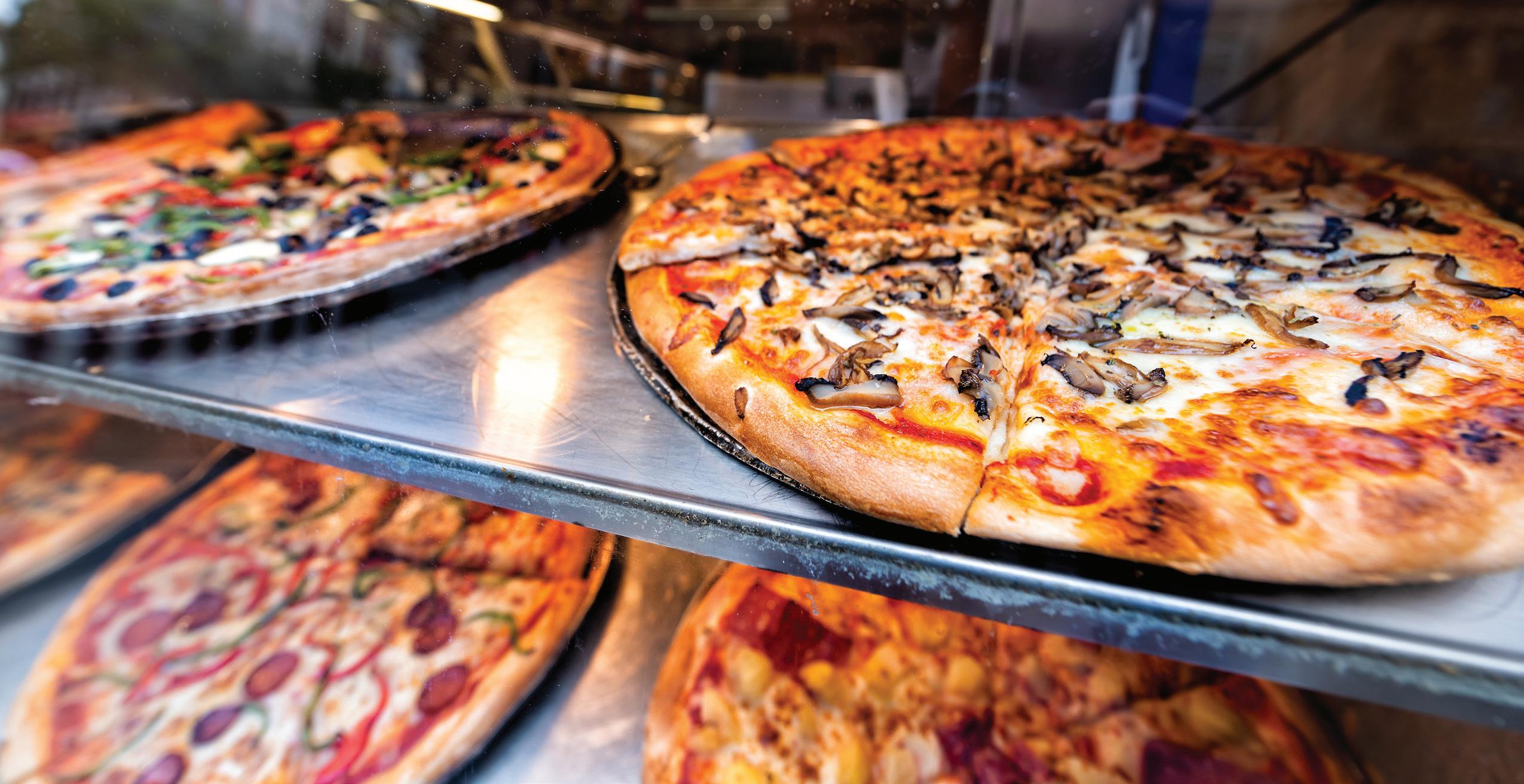
• Domino’s and Papa John’s report that over 75% of their orders are digital, creating an expectation for fast, frictionless ordering.
• Independents often lag in technology adoption, which can limit customer reach.
Non-chain pizza also thrives by celebrating regional diversity, a strength that large chains can’t easily replicate. From New York’s foldable slices to Chicago’s deep dish, Detroit’s square pies, and New Haven’s coal-fired apizza, independents have preserved and expanded these distinct traditions. This diversity is resonating with younger diners who increasingly value authentic culinary experiences over standardized menus.
Despite challenges, the independent pizza segment remains resilient and poised for growth. Market analysts forecast that the overall pizza industry will continue to expand at 3–4% annually through 2028, with independents expected to grow at a similar rate—if they can adapt through digital innovation and menu differentiation.
Opportunities for growth include:
• Expanding plant-based and gluten-free offerings (already adopted by 1 in 3 independents).
• Leveraging loyalty programs to compete with chain rewards apps.
• Focusing on catering, pop-ups, and community partnerships to diversify revenue streams.
Independent pizzerias are more than just restaurants; they’re storytellers of their neighborhoods, guardians of culinary traditions, and testing grounds for the next big food trends. As chains scale with efficiency, independents scale with heart, serving not just pizza, but a sense of place and belonging.
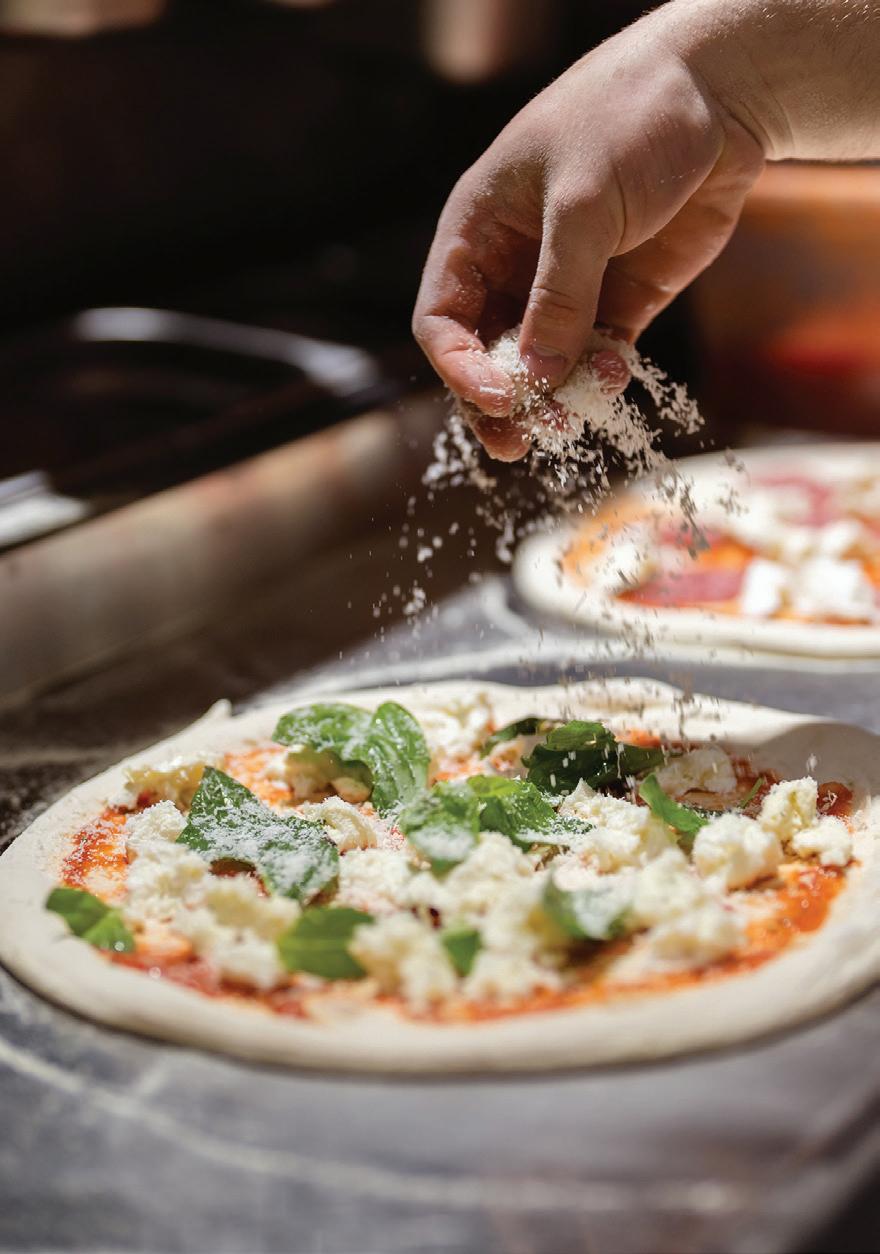




Ice Melt is a must-have during harsh winter months. Prevent areas from getting slick due to ice and snow. Melts ice and snow even at -15 degrees F. All that’s left is a safe, clean surface. Keep your customers safe.
